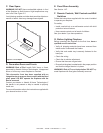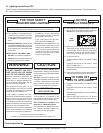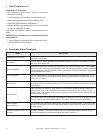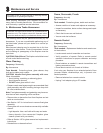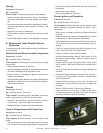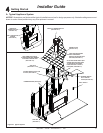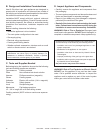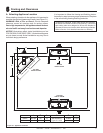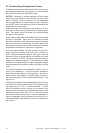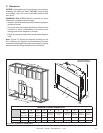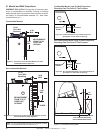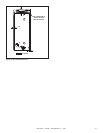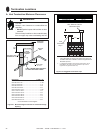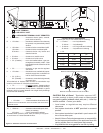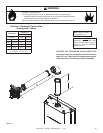Heat & Glo • SLR-B • 2195-900 Rev. P • 12/1118
B. Constructing the Appliance Chase
A chase is a vertical box-like structure built to enclose the
gas appliance and/or its vent system. In cooler climates
the vent should enclosed inside the chase.
NOTICE: Treatment of ceiling fi restops and wall shield
fi restops and construction of the chase may vary with the
type of building. These instructions are not substitutes
for the requirements of local building codes. Therefore,
you MUST check local building codes to determine the
requirements to these steps.
Chases should be constructed in the manner of all out-
side walls of the home to prevent cold air drafting prob-
lems. The chase should not break the outside building
envelope in any manner.
Walls, ceiling, base plate and cantilever fl oor of the chase
should be insulated. Vapor and air infi ltration barriers
should be installed in the chase as per regional codes for
the rest of the home. Additionally, in regions where cold
air infi ltration may be an issue, the inside surfaces may be
sheetrocked and taped for maximum air tightness.
To further prevent drafts, the wall shield and ceiling fi re-
stops should be caulked with caulk with a minimum of
300ºF continuous exposure rating to seal gaps. Gas line
holes and other openings should be caulked with caulk
with a minimum of 300ºF continuous exposure rating or
stuffed with unfaced insulation. If the appliance is being
installed on a cement surface, a layer of plywood may be
placed underneath to prevent conducting cold up into the
room.
The factory-supplied non-combustible board must be
used in all installations. It must be directly attached to
structural framing adjacent to the appliance. Screw fas-
teners should be installed in the pilot holes provided in
the outer perimeter of the non-combustible board. See
Figure 13.3.
The factory-supplied board is designed such that its edg-
es will be at the approximate center of the adjacent fram-
ing, assuming it is 1-1/2 in. nominal thickness. This will
allow the wallboard joints to occur on the center of the
framing where the panels can be fastened properly. If the
framing thickness is less than 1-1/2 in. nominal, such as
with formed steel systems, then it may be necessary to
adjust the adjacent framing dimensions so that the non-
combustible board and wallboard joints are centered on
the framing.



